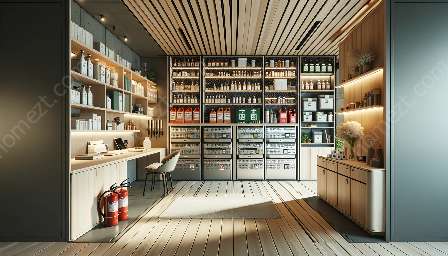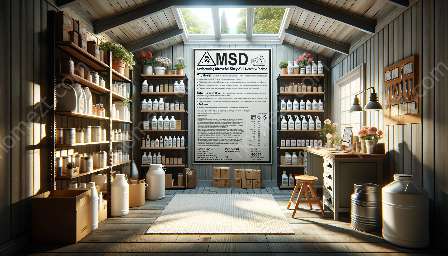Hazardous material storage design and infrastructure plays a crucial role in ensuring the safe storage of chemicals, flammable substances, and other dangerous products. Understanding the best practices for designing safe storage facilities and integrating them into home safety and security measures is essential for preventing accidents and protecting the environment.
Safe Storage of Hazardous Materials
Storing hazardous materials requires careful consideration of various factors, including the types of materials, their chemical properties, and potential hazards. The design and infrastructure of storage areas must comply with safety regulations and standards to prevent leaks, spills, and other accidents that could endanger individuals and the surroundings.
Key Design Considerations
When designing storage facilities for hazardous materials, several essential factors should be taken into account:
- Segregation: Hazardous materials should be stored in designated areas to prevent cross-contamination and chemical reactions.
- Containment: Storage facilities must incorporate appropriate containment measures to prevent spills and leaks from spreading.
- Ventilation: Adequate ventilation systems are necessary to prevent the buildup of toxic fumes and vapors.
- Lighting: Proper lighting is essential for maintaining visibility and preventing accidents during storage and handling.
- Security: Implementing secure access controls and monitoring systems helps prevent unauthorized access and potential theft or misuse of hazardous materials.
Infrastructure Requirements
The infrastructure of hazardous material storage facilities should be designed to meet the specific needs of the stored materials and ensure that they are safely contained and accessible when required. Important infrastructure requirements include:
- Storage Containers: Using approved and suitable containers and tanks for storing hazardous materials according to their compatibility and specific requirements.
- Spill Containment: Installing secondary containment measures, such as spill pallets or berms, to capture and isolate spills and leaks.
- Labeling and Signage: Clearly marking storage areas with appropriate hazard signs and labels to provide essential information and warnings.
- Emergency Response Equipment: Having readily available spill control and personal protective equipment for emergency response and containment.
- Proper Storage Areas: Designate specific storage areas for hazardous materials, keeping them away from living spaces and ensuring proper ventilation and containment.
- Secure Cabinets and Locks: Utilize lockable cabinets and containers to prevent unauthorized access to hazardous materials, particularly for homes with children or pets.
- Labeling and Organization: Clearly label all containers and ensure they are organized in a way that minimizes the risk of accidental spills or mixing of incompatible substances.
- Education and Training: Educate family members on the potential hazards of stored materials, safe handling procedures, and emergency response protocols.
- Smoke and Carbon Monoxide Detectors: Install and maintain appropriate detectors to alert residents to potential dangers, such as chemical leaks or combustion.
Home Safety & Security
Integrating safe storage practices for hazardous materials into home safety and security measures is critical for minimizing risks and protecting the well-being of household members. Whether storing household chemicals, fuels, or other potentially hazardous substances, the following tips can help enhance home safety and security:
By integrating these measures and paying close attention to hazardous material storage design and infrastructure, households can significantly reduce the risk of accidents and promote a safer living environment.



